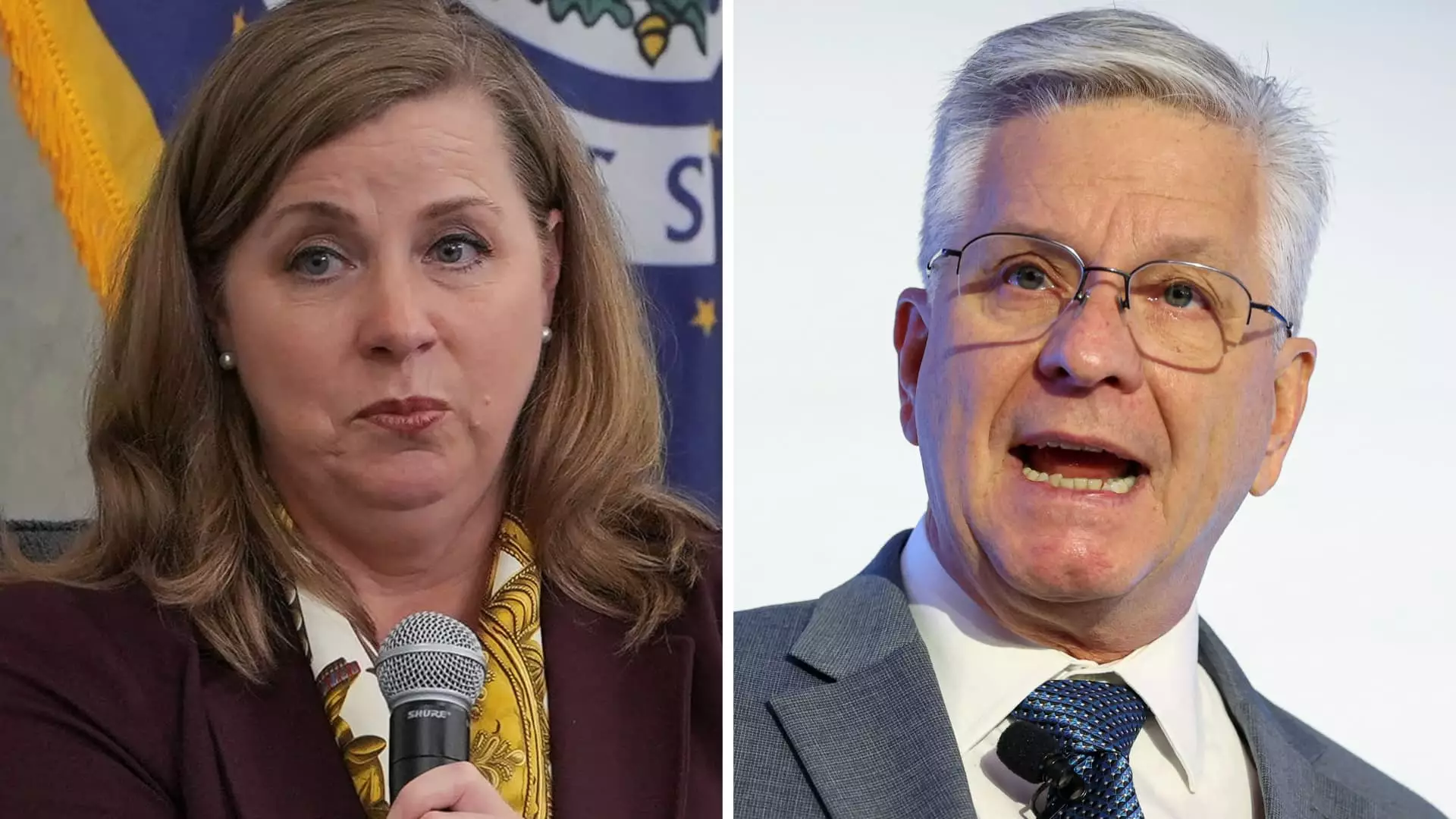In a surprising historical twist, two Federal Reserve officials, Christopher Waller and Michelle Bowman, defied the consensus by publicly advocating for a rate cut. Their dissent signals a rare breach in the Fed’s traditionally unified front, especially since the last dissent of this magnitude occurred nearly three decades ago. Their disagreement centers on the urgent need to address imminent risks to the labor market and economic growth — risks they believe are being overlooked by an overly cautious Federal Open Market Committee (FOMC). From a center-right liberal perspective, this debate exemplifies the importance of pragmatic policymaking that balances economic growth with inflation control, rather than clinging to an overly conservative stance in times of vulnerability.
Economic Data as a Catalyst for Change
The July employment report that triggered this debate painted a sobering picture: a gain of only 73,000 jobs, well below expectations, and revisions of prior months lowering employment counts. These figures suggest a fragile labor market that could deteriorate further if policymakers continue to delay action. Waller and Bowman argue that waiting on the sidelines amid signs of weakness and limited tariff effects risks aiming for a “wait-and-see” approach that could lead to macroeconomic miscalculations. They see merit in proactive, measured rate adjustments to prevent the economy from falling behind the curve, which could result in stagnation or worse: stagflation.
The data-driven perspective underscores the importance of timely policy responses to shifting economic signals. Relying solely on temporary tariff impacts or overly optimistic assumptions about inflation may only delay necessary adjustments. This view supports a centrist stance advocating for strategic easing to keep the economy resilient without risking runaway inflation — a delicate balance that demands bravery and pragmatism.
Tariffs and Inflation: A Misjudged Catalyst?
Both Waller and Bowman dismiss the notion that tariffs are significantly fueling inflation, emphasizing instead that their effects are largely transitory. Their stance counters the narrative pushed by political figures, notably President Trump, who has been vocally pressing the Fed to cut rates sharply. They highlight that the inflationary upticks caused by tariffs so far are small and unlikely to persist, which should reassure policymakers that aggressive rate reductions are unnecessary.
This disagreement illuminates a broader debate about economic stimuli: Should monetary policy respond to political pressures or stick to empirical data? From a centrist-liberal vantage, patience and cautiousness are vital, but not at the expense of economic health. An overly defensive posture risks undercutting growth, particularly when employment is showing signs of stagnation. The Fed’s reluctance here suggests a tendency towards risk aversion that may not be justified given current economic indicators.
Political Pressure Versus Economic Prudence
President Trump’s relentless criticism underscores a fundamental tension: political influence versus independent monetary policy. Trump’s call for aggressive rate cuts, including suggestions for the Fed to be replaced or overridden, underscores a populist push for immediate economic gains. However, a pragmatist approach whose focus is on sustained health over short-term political wins should be prioritized. The Fed’s cautious stance—favoring gradual, measured easing—aims to avoid the pitfalls of impulsiveness that can lead to future instability.
From a center-right standpoint, it’s critical that monetary policy remains anchored in economic realities rather than political expediency. The Fed’s independence is vital, but it must also be flexible enough to respond swiftly when data indicates vulnerabilities. Policymakers need to balance the political noise with a sober assessment of economic signals, advancing reforms that strengthen the economy’s fundamentals without succumbing to populist demands for immediate gratification.
The Case for a Balanced, Pragmatic Approach
Ultimately, the debate boiling within the Fed exposes a broader philosophical divide: when should intervention occur? Waller and Bowman exemplify a pragmatic approach that recognizes the importance of gradual, predictable policy adjustments rooted in empirical evidence. Their dissent is a plea for action in the face of mounting economic headwinds, advocating steady rate cuts of up to 1.5 percentage points to support growth without igniting inflation.
This perspective aligns with a centrist-liberal view that values economic stability but recognizes the necessity of timely intervention. Policy inaction, especially in times of slowing growth and uncertain employment prospects, is arguably the greater risk. Conversely, moderate and well-communicated rate adjustments can serve as a catalyst to prevent a downward spiral, ensuring the economy remains on a sustainable growth trajectory.
In this tense standoff between cautious conservatism and urgent pragmatism, the Federal Reserve’s ultimate decision will reveal its true priorities. Whether it chooses to heed the warnings of dissenters or maintain its conservative course will have lasting implications for the economic health of the nation. Balancing economic realities, political pressures, and long-term stability remains the central challenge for policymakers striving to serve both markets and society.

